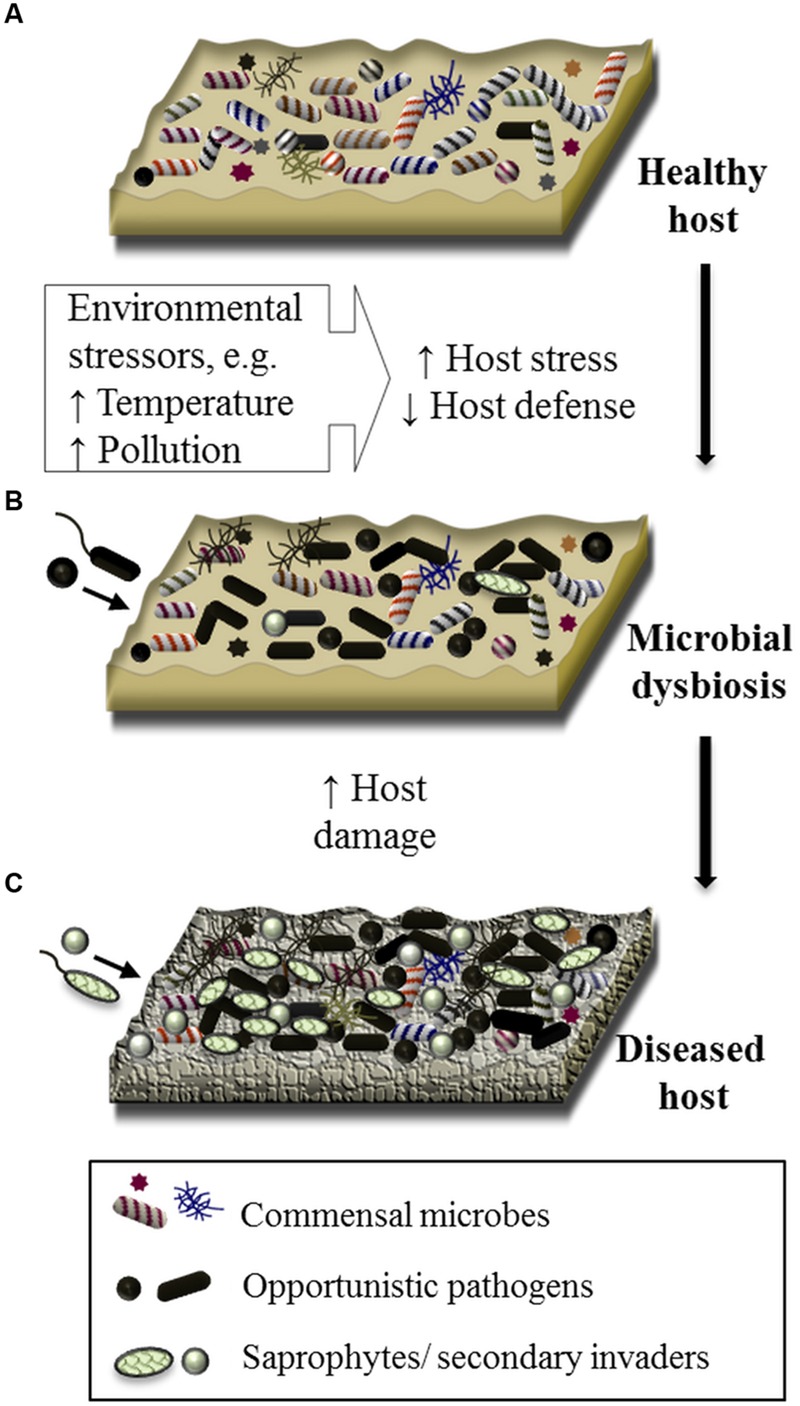FIGURE 1.

Schematic of the proposed involvement of microbial dysbiosis, opportunistic pathogens and polymicrobial interactions in the disease of marine organisms. The surface of a healthy marine living organism (healthy host) is colonized by a consortium of commensal microorganisms, which may include bacteria, archaea, microbial eukaryotes, and viruses (A). Under conditions of elevated environmental pressure, the host can become stressed negatively impacting the host defence mechanisms. On this susceptible host, opportunistic pathogens and/or pathogenic consortia (i.e., polymicrobial infection), originating from the healthy host or from the surrounding environment, proliferate, resulting in a state of microbial dysbiosis (B). Microbial pathogens along with saprophytes or secondary colonizers further cause damage to the host resulting in visible disease (C).
